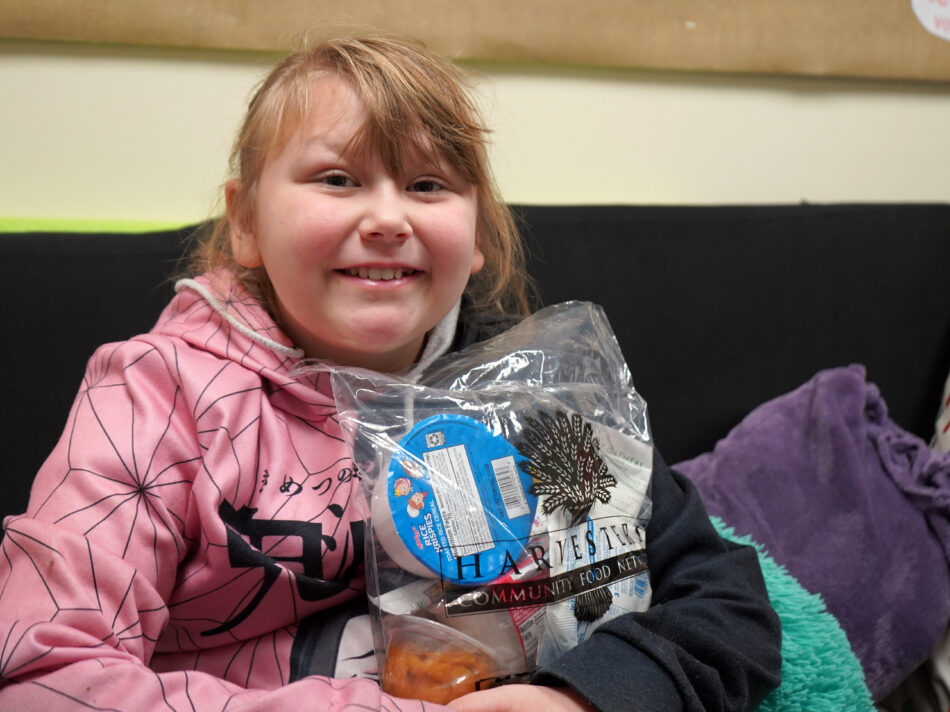
“I wish there would be enough food for everybody. There kinda is, but, like, there’s too many greedy people sometimes,” said the third grader at Whittier Elementary in Kansas City, Kan.
Her solution to hunger?
“You could multiply food. Wanna know how that can work? You can make a lot of food, take away money. Burn all the money, and stuff that makes money, so there would be no rich people and no poor people, you know what I mean?”
Like 95% of students who attend Whittier Elementary, Mychalie qualifies for federally funded free and reduced lunch and breakfast. When she receives her BackSnack from Harvesters on Friday afternoon, she sometimes “hides” the water and the mandarin oranges in her room before sharing the rest of the food with her older sisters and her mother.
Like one in six children in the United States, there are times when Mychalie is hungry between meals: “When I have a headache and eat or drink, it helps.”
On days when there is food, Mychalie is proud of her culinary accomplishments. She has learned how to make deviled eggs from her mom, and she once used a chopstick to create a snack kebab of fruit snacks and bananas, served with a pudding dip.
“The pudding was vanilla, so it matched the banana,” she says.
When she grows up, Mychalie wants to be an animator, archaeologist, or a music teacher. An animal lover, she has a dog, three cats and a hedgehog. The best birthday party she ever attended as a guest included horse rides, snow cones and cotton candy.
But those moments of being just a typical kid worrying about kid stuff are sometimes interrupted by worries that her mom is struggling to pay bills, or that a homeless woman she recently encountered might starve.
“I’m sad for people who are poor, but when I didn’t have any food to give, wanna know what I did? I gave her a hug. She just started crying happy tears, and I made her happy, so I’m glad I gave her that.”
